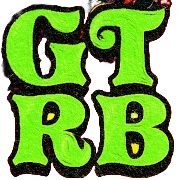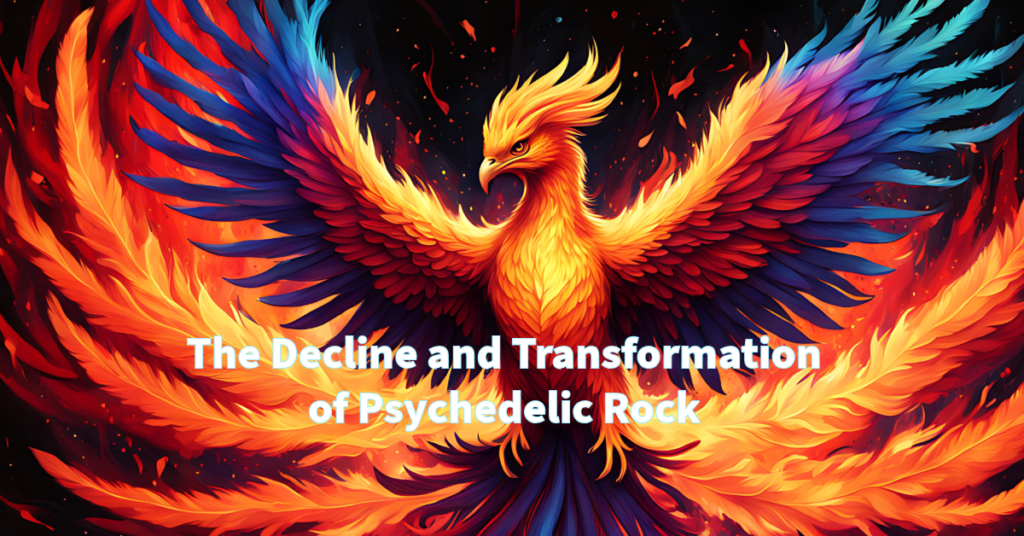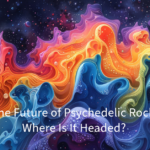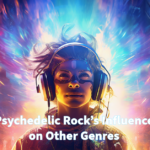As the 1960s drew to a close, the world of psychedelic rock began to change. The counterculture movement that had fueled its rise was losing steam, and the music scene was shifting in new directions. The optimism and experimentation that had defined the psychedelic era were giving way to a darker, more introspective mood. While the music continued to evolve, it was clear that the golden age of psychedelic rock was coming to an end.
One of the key moments marking this transition was the Altamont Free Concert in December 1969. Intended to be a West Coast answer to Woodstock, the event instead ended in tragedy, with violence breaking out and a fan being killed during The Rolling Stones’ performance. The chaos of Altamont symbolized the end of the utopian ideals that had driven the psychedelic movement and marked a turning point in rock history.
Shifting Musical Tastes
As the 1970s began, musical tastes were shifting. The freewheeling experimentation of the 1960s was giving way to more structured and polished sounds. The raw, unfiltered energy of psychedelic rock began to be replaced by heavier, more complex music. Progressive rock, hard rock, and heavy metal started to gain prominence, taking cues from psychedelic rock but moving in new directions.
Bands like Led Zeppelin and Black Sabbath took the heavy, riff-driven elements of psychedelic rock and transformed them into the foundations of hard rock and heavy metal. Led Zeppelin’s early albums, with their mix of blues, folk, and hard rock, carried the spirit of psychedelic experimentation into a new era, while Black Sabbath’s dark, doom-laden sound laid the groundwork for heavy metal.
At the same time, progressive rock bands like Pink Floyd, Yes, and King Crimson were taking the experimental ethos of psychedelia and applying it to more intricate, ambitious compositions. Pink Floyd’s The Dark Side of the Moon (1973) became one of the defining albums of the decade, blending psychedelic influences with themes of madness, mortality, and the human experience. The album’s use of extended instrumental passages, complex time signatures, and innovative studio techniques showcased the band’s evolution from their earlier, more overtly psychedelic sound.
The Impact of Commercialization
As psychedelic rock became more popular, it also became more commercialized. What had once been an underground movement, driven by a desire to break free from mainstream norms, was now being embraced by the very industry it had sought to escape. The music, which had once been about pushing boundaries and exploring new ideas, began to be packaged and sold as a product.
This commercialization had a profound impact on the genre. Many of the bands that had been at the forefront of the psychedelic movement found themselves under pressure to produce hits, leading to a watering down of their original sound. The desire to appeal to a broader audience often meant sacrificing the experimental edge that had made psychedelic rock so revolutionary in the first place.
The Beatles’ breakup in 1970 symbolized this shift. As one of the most influential bands in the history of psychedelic rock, their decision to disband marked the end of an era. The members of The Beatles went on to pursue solo careers, with varying degrees of success, but the collective magic that had defined their work during the psychedelic era was never fully recaptured.
The Rise of Progressive and Hard Rock
While psychedelic rock was on the decline, its influence was still being felt in the music that followed. Progressive rock, with its emphasis on complexity and experimentation, took many of the ideas that had been pioneered by psychedelic bands and pushed them even further. Bands like Yes and King Crimson created sprawling, multi-part compositions that blended rock with classical, jazz, and electronic music.
King Crimson’s debut album, In the Court of the Crimson King (1969), is often considered one of the first progressive rock albums. With its mix of heavy guitar riffs, Mellotron-driven orchestration, and surreal lyrics, the album was a direct descendant of the psychedelic rock movement, but with a more ambitious and grandiose approach.
Hard rock and heavy metal also owed a debt to psychedelic rock. The genre’s emphasis on powerful riffs, dark themes, and a sense of rebellion found a natural home in the burgeoning heavy metal scene. Black Sabbath’s self-titled debut album (1970) is often cited as one of the first heavy metal records, and its ominous, downtuned sound can be traced back to the darker, more intense side of psychedelic rock.
Led Zeppelin, with their mix of blues, rock, and folk, carried the spirit of psychedelia into the 1970s while adding a heavier, more aggressive edge. Their live performances, characterized by extended improvisations and a focus on the sheer power of the music, kept the flame of psychedelic rock alive even as the genre itself was fading.
Notable Late Psychedelic Works
Despite the decline of the genre as a whole, the early 1970s still saw the release of several notable psychedelic works. Pink Floyd, who had started as a quintessentially psychedelic band under the leadership of Syd Barrett, continued to explore the boundaries of the genre even as they evolved into one of the leading progressive rock bands of the decade.
Atom Heart Mother (1970) and Meddle (1971) were both albums that bridged the gap between Pink Floyd’s psychedelic roots and their later, more polished sound. Tracks like “Echoes” from Meddle showcased the band’s ability to create expansive, atmospheric soundscapes that were deeply rooted in the psychedelic tradition.
The Grateful Dead, another band synonymous with the psychedelic era, continued to evolve throughout the 1970s. Albums like American Beauty (1970) and Wake of the Flood (1973) saw the band incorporating elements of country, folk, and blues into their sound, while still maintaining the improvisational spirit that had defined their earlier work.
The End of the Psychedelic Era
By the mid-1970s, it was clear that the golden age of psychedelic rock had come to an end. The genre that had once represented the cutting edge of musical experimentation had given way to new sounds and styles. Progressive rock, hard rock, and heavy metal had taken the baton, carrying forward the spirit of innovation that psychedelic rock had ignited.
However, the legacy of psychedelic rock was far from over. The genre’s influence would continue to be felt in the decades that followed, inspiring new generations of musicians to push the boundaries of what music could be. As we move into the next part of this series, we’ll explore how psychedelic rock experienced a revival in the 1980s and 1990s and how its influence continues to shape modern music today.
The colors may have faded, but the echoes of psychedelic rock still reverberate through the halls of music history.




